Marco Tardito‘s photography, which is both personal and commercial is both subtle and poetic. It is a kind of poetry that expresses the soul like a whisper that conveys subtle emotions with touching melancholy.
Poetry that is an intimate story that pervades fashion and travel photography. Granular and pictorial fashion photography, that is delicate and contrasts with the harsh and aggressive image of women portrayed as a fascinating unreachable femme fatal. Delicate human photography, where beauty is everything. Travel photography that does not limit itself simply to reproducing landscapes and exotic beauty spots, but also shows the importance of travel as if it were something material.
Then there is Marco Tardito’s personal research: finding beauty in dried flowers and leaves, in order to tell a story through magical vision that is created by the use of alternative lenses and printing methods on different types of artistic papers. The beauty that we have inside comes from the world that is around us.
Fabiano Busdraghi: What does photography mean to you?
Marco Tardito: A story, a poetic vision, a non-verbal means of communication that uncovers the soul of the person who creates it.
Fabiano Busdraghi: How did you begin as a photographer? What is your background?
Marco Tardito: I started taking photos from a very early age, I recall receiving a birthday present it was a Polaroid camera with black and white film, (I can’t remember the make and model). Then later at the age of 13 years, in a technical course of handicrafts, I learnt to print photos from negatives.
At that time I did not have any of my own negatives so I printed off photograms from an 8 millimetre film that I found at home. The result was an image in negative and the procedure fascinated me. I started colour photography using a Canon, I always amused myself experimenting with photography and I still continue to do so nowadays.
Fabiano Busdraghi: Why did you choose to focus on still art for your personal work and more specifically why dead flowers and dried-out plants? What attracts you to this particular topic?
Marco Tardito: I started to think about what is and is not supposed to be beautiful. In reality nothing is ugly to me.
I observed flowers as they wilted and withered and I realized the whole process was marvellous even when fresh beauty “vanishes”.
I wanted to widen the concept of things being beautiful forever. The challenge for me was to show and highlight the beautiful aspect that persists in all things throughout life.
I began with objects that I had at hand –flowers, leaves…and I mean to continue to do so.
Fabiano Busdraghi: Besides the topic and the subject of your photography you are particularly attentive to all printing aspects. First of all you use artistic paper with a particular texture and a rough surface that is usually used for water colours. You cover this paper with a layer of transparent varnish. Could you explain how you print and how you came to use this particular process?
Marco Tardito: It all started because I needed some kind of support.
I was inspired by a story by W. Gibson, that talks about a box made by a mysterious artist using various elements. It evokes feelings of poetry and nostalgia in the reader.
I needed a sheet of paper with solid edges, not frayed ones. Thick drawing paper that is far from suitable for modern printers or inkjet printers.
Moreover, I wanted to be able to check and intervene directly and so it was impossible to entrust the work to a printing lab as I needed to get certain results throughout the process.
Once an image is printed on drawing paper the ink tends to be absorbed so I had to use a resin to keep the colour on the surface. This is explained more thoroughly in the article “Varnishes for ink jet printing on artistic paper.”.
I made several attempts, using various sorts of paper and varnishes, before I was satisfied with the result. This printing method allows me to intervene whenever necessary to highlight specific aspects while leaving other features in the background. In this way I am able to obtain a unique effect each time I print.
Fabiano Busdraghi: For your photos you generally use old-fashioned big format cameras, or equipment that you have personally modified. What makes you intervene on your shooting equipment? Is it because you need to obtain a non-conventional result or because you get pleasure in modifying and building photographic equipment? Tell us a little about your latest “invention”…
Marco Tardito: I think that photography involves aspects that are technical, mechanical and spiritual. In Africa they believe that photography can capture the soul and I think that is true too.
For this reason I like to work with all elements that help me capture a part of the spirit of the subject and to catch the emotional aspect. Like a modern wizard I assemble old pieces of machinery and lenses, making a special effort not to remove the dust, which I believe is an essential and necessary component.
My favourite support is certainly the 4×5 Polaroid. Recently I have also been experimenting with digital cameras to obtain satisfying results to avoid being unprepared for the new ever-evolving technology. I am perfecting a hand made lens system to attach to my Canon DS III, using tube extensions, rubber car sealing and old lenses…
Fabiano Busdraghi: The first time you showed me your prints on varnished paper you told me that you had spent years trying to find the perfect pictorial look and feel, without resorting back to past printing methods. Why are you particularly interested in pictorialism. Where does this interest come from? Why are you attracted to this particular sort of image?
Marco Tardito: Actually painting is my starting point.
I am not really interested in photography as an expression of reality but rather as something that evokes images that are at the back of our memories. Images that have been stored in our hypothalamus. I try to make dreamlike images that touch upon experiences that we have been through or that I would like to feel. Once when I was in Tokyo I happened by an exhibition by Wim Wenders, I saw an extract of the film “ till the end of the world” which is about dreams.
I was stunned by it.
Fabiano Busdraghi: In general does your work tend to stem from a very precise idea, or an inspiration that unravels itself slowly but surely? Or maybe it is something that is born from pure chance?
Marco Tardito: In general I would say that I favour a direct approach to photography.
I start with an idea or desire and I build it up little by little altering what I see as necessary as I go along or memorising the aspects that I wish to modify at a later stage. I am keen on “creating” the images rather than “stealing” them. That is why I work limiting myself to using what I see and feel personally. I cannot stand working with artificial light and have ruled out the use of a flash in my photography. I use natural sunlight and shadow only.
Fabiano Busdraghi: In order to obtain your particular pictorial print on artistic paper which is then varnished you need a lot more time than you would if you simply printed on paper for ink jet printers. In art, especially in contemporary art, the complexity of the technique used is not usually of great importance, it is secondary to the end result.
Photography has always been challenged by technical difficulties. Images obtained after long and difficult procedures has often gained value and worth. In your case, would you say that you are interested principally in the end result or do you feel that the manual process leads you to realising an aesthetic image that is yours? Does the fact that you need to employ handcraft techniques, even when using the computer in your art, modify in some way the value of your work?
Marco Tardito: without a doubt handicraft techniques are essential to me. By working in this way I can intervene and alter at any point in the process. Photography as far as I interpret it, is made up of several phases: shooting the image, developing and printing. One can intervene in each and every phase. It is necessary to do so if you want to be part of the creative process. As far as the digital era is concerned it is even more important to personalise your work using handcraft otherwise you produce what software packages give you. You do not create what you want but what Mr. photoshop and his plug-in friends want.
I enjoy the juxtaposition of the contemporary and old-fashioned style. Rewind vs. fast-forward. Using modern and old style techniques together in unison.
Obviously the end result interests me and I get pleasure from being creative rather than just reproducing images.
I love what I do and for me every minimal detail has its special meaning. It is all part of a kind of story-telling process. I have never been good at expressing myself through writing and I find much easier to convey ideas through images.
Fabiano Busdraghi: Besides researching and developing your personal work you are a fashion photographer and have worked in advertising. How do you make these two types of work coincide? Does each job give you a chance to express your creativity in different ways or does carrying out work that has been commissioned represent a heavy compromise that you must do?
Marco Tardito: I started in the fashion world for commercial reasons. I was lucky in that I had a privileged position as art director of myself. Thus I was able to combine poetry and marketing in my work.
More recently the demands of the market have pushed artistic and emotional aspects into the background. The harsh rule “show more product” is killing the artistic spirit. More often than not, you start with an excellent project that is then changed and redirected towards a more commercial goal that is less stimulating from an artistic point of view.
However, I have promised myself that I will not abandon the hope of finding a client who will appreciate expression that is not merely showing things for sale for others to buy.
Fabiano Busdraghi: I have seen your still life images on artistic paper that can also be admired on your web site along with your fashion photos. There is also a photo-reportage taken in Africa. Could you please tell us something about this journey? Why are these photos so important to you?
Marco Tardito: They are part of an experiment done in Tanzania.
You cannot take portrait photos there. People do not like to be photographed, at least that is the way things were when I was there in 1993. I used a 1/2 format Olympus Pen without putting the image into a frame. I simply clicked pointing the lens at whatever interested me. I developed the film in cross process, focussing on colour that is particularly vibrant in Africa.
The concept of the 1/2 format is interesting; the association of the images created on the film generates compositions that are amazing, and not entirely planned. Moreover I am fascinated by the overall composition that is very rough, not at all studied or precise, it is “casual” like events that can happen to you on any adventure of this kind.
It was a project put to one side that I wanted to finalise and work on to share with the people I had travelled with.
That particular journey gave me strong emotions and made me think about the pace of life and priorities that are so different from what we are used to today.
Fabiano Busdraghi: I am going to ask you the same question I have asked other photographers. Are there any photos “not yet taken”? Would you like to tell us about them?
Marco Tardito: The photo I did not take. Once I was on Harbur Island for work and so was Vanessa Paradis. She was sunbathing topless. I could have taken her photo and sold it to the newspapers… I could have become a famous paparazzi… I haven’t really got any photos that I wish I had taken, but I can assure you I have a lot of photos that I want to take sooner or later…
Fabiano Busdraghi: You’ve just moved back to Paris where you lived when you were younger. What made you choose to return? Do you feel that the place one lives in is essential for a good photographic career or is it possible to live anywhere in the world and work well thanks to internet?
Marco Tardito: I came back to Paris for various reasons. Paris is a wonderful city that is constantly on the move and this undoubtedly helps a lot. Nowadays thanks to internet it is easy to move, as far as work is concerned.
However the atmosphere that a city like Paris, London or New York has to offer cannot be transmitted through pixels on a screen. You need to be there and live it. The work of a photographer and other creative people is highly influenced by the moods that surround them and the people close at hand.
Unfortunately in Italy I feel there is an ever-growing pessimistic and negative atmosphere that certainly does not help.
Fabiano Busdraghi: Your web site is full of photos and well arranged. It is not only rich in the number of images but also well designed graphically. How important is a shop window like yours on internet? Does your work spread through traditional channels such as art galleries, exhibitions, publications, etc, or do you rely on new artistic circuits that are appearing on internet these days? What do you think about this new method of diffusion?
Marco Tardito: I think that Internet is a kind of a business card. It is impossible not to have one to let people know who you are. Having said that I would never rely on a business card to speak about myself and my job. Then there are blogs where people are free to express their ideas, discuss arguments more deeply and suggest ways of solving problems etc. It is like being in a bar chatting to friends, you can always learn by listening to others. In a society that is becoming more and more global, where people live in Milan and work in New York it is important to leave a trail even if it is in digital format.
I’ll tell you a secret: Designing web sites fascinated me and a few years ago I was interested in developing some. I learnt to use Flash and css, and for a while I enjoyed creating a couple of web sites (Diadora, Napapijri). I tailored my web site to suit me… but have decided not to do any more.
Fabiano Busdraghi: Have you got any favourite photography blog? Do you think they could ever replace classical and traditional diffusion methods?
Marco Tardito: I read magazines online. Generally speaking I do not buy printed newspapers or magazines unless I want to keep a particular article in my files. Newspapers are far too slow for me – news arrives on the web much more quickly… I am not a fan of any particular blog but I use a web site called Netvibes, that helps you gather rss feeds, where I periodically link in my favourite sites.
Anyway, the photography sites I glance at are: Shutter Scoop, Camera Dojo, Foto Decadent, Il blog di Graeme Mitchell, Dark Light Photo, Clickblog, il blog di Catherine Buca, Photosapiens, Creative Lube e naturalmente Camera Obscura. Del blog di Chase Jarvis I do not really like the photographic style but occasionally I feel it has some interesting things to say.
Fabiano Busdraghi: You are the author of a photography blog. What inspires you to write it? Are photography and writing two complementary activities or do they clash?
Marco Tardito: I would not describe myself as the author of a blog. I have tried to set up a blog and write several times but as I said before I am not fond of writing or talking about myself. Blogs attract me but I really have too many things to do and a family to care for. Time to dedicate to the blog is scarce … I enjoy starting up conversations every now and then but to be a real blogger and have the feedback I need means I should dedicate MUCH more time to the blog.
Fabiano Busdraghi:Can you tell me the name of a photographer you particularly admire for his work and explain why?
Marco Tardito: My favourite fashion photographer is Roversi. I like him because I like him. Full stop.
Recently I have discovered Sally Mann,. She appeals to me as a photographer for her approach to creating images both for the content and the collodion technique she employs.
Fabiano Busdraghi: What are you working on at the moment? How is it different from your previous work? Have you got any plans for future projects that you have not started yet?
Marco Tardito:New plans…, I want to prepare material for a new exhibition, and then I am looking into time-laps, whilst carrying on with my study of old-fashioned Dslr lenses.
Fabiano Busdraghi: Just to know a little bit about your personal interests. What book are you reading at the moment? What music do you enjoy listening to? Which are your favourite films?
Marco Tardito: Books, the last book I read was “guerreros” by W. Gibson, but it really disappointed me.
Music: Alva Noto+Ryuichi Sakamoto and in general I listen to last.fm selecting the kind of music that suits my mood at that moment. I let the programme go on to play music by musicians that is similar to my original choice.
Film: “Dead man” by Jarmusch and purely for the photography “The assassination of Jesse James by the coward Robert Ford” and “The illusionist”.


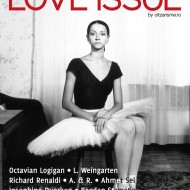
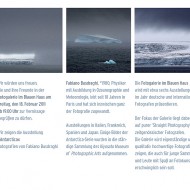
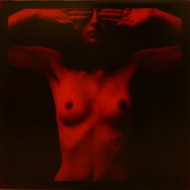
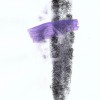
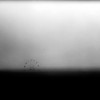





























Questa foto di Marko è uno dei più bei ritratti che io abbia mai visto. Complimenti davvero. Grazie per questi 10 minuti di lettura di fronte ad un (mediocre) caffè 🙂
Grazie Fabio, si tratta dell’attrice Sandrine Holt ritratta un po di anni fa.
Great interview and lovely images. Shame the “Varnishes for ink jet printing on artistic paper” doesnt come in english. Would have loved to read more about it.
Hello Heidi
thank you very much for your nice words. I translated the article in english, now you can read it 🙂
There is a lot of interesting stuff in the comments too, you can try to use a machine translator to read them.
You can also subscribe to this post comments RSS feed.